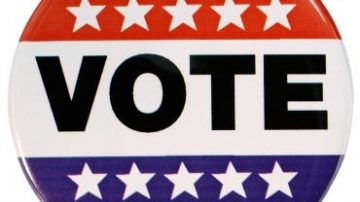As Bernie Sanders exits stage left, the general election begins. Where do things stand?
Our unprecedented president—the first to win office without prior government or military experience—confronts an unprecedented situation: A pandemic that has forced the government to put the economy to sleep months before a presidential election.
The last time America faced something similar was 1918. The Spanish Flu decimated a population mobilized for its first European war. State and local governments implemented lockdowns, quarantines, and other social-distancing measures to slow the spread of infection.
The midterm campaign was conducted against a background of fear. In San Francisco, authorities required poll workers and voters to wear masks. It was, said the San Francisco Chronicle, “the first masked ballot ever known in the history of America.”
If this masked ballot is anything like its predecessor, the incumbent is in trouble. The voters who showed up on Election Day 1918 rebuked Woodrow Wilson’s Democratic Party. It lost control of both the House and the Senate. Two years later, Democrats lost the White House as well.
As Jason Marisam observes in an excellent paper on the 1918 election, the epidemic changed campaign practices. Mass gatherings were canceled. Candidates relied on newsprint and direct mail. It was a preview of the campaign that may be in our future, where coronavirus task force briefings replace MAGA rallies and Joe Biden addresses a virtual Democratic National Convention from his rec room.
The other noticeable effect of the flu was low turnout. Indeed, when you look at voting patterns during times of emergency—times of war, hurricanes, earthquake, tornado, and plague—you see low turnout across the board. It’s the one constant.
A low-turnout election would interrupt the recent trend upward. Who would benefit? It is too early to say. Republicans have the mistaken impression that high turnout favors Democrats. That is not necessarily the case. After all, Republicans have a larger pool of irregular voters—whites without college degrees—to draw from. And in a polarized environment, in a base mobilization election, every marginal voter counts.
President Trump needs massive turnout from his rural and exurban supporters. He starts this race behind. For the past month, Biden has led in every poll but one in the RealClearPolitics average. (Fox has a tie.) That lead may narrow when pollsters screen only likely voters. That lead might not be as great as Hillary Clinton’s was at this point in 2016. But this race is different.
Trump isn’t an outsider staring down the epitome of the Beltway elite. He’s the incumbent. His personality and record have been on display for four years. And Biden isn’t Clinton. He is winning big margins among voters who hold unfavorable views of both candidates—a group that went for Trump by double digits in 2016.
Trump trades within a narrow band. He won the Electoral College with 46 percent of the popular vote, a level of popularity he has exceeded only once in the RealClear average since February 2017. On the other hand, he hasn’t fallen below 40 percent job approval since March 2018. Election analyst Henry Olsen estimatesTrump’s pre-election approval rating needs to stand at 46 or 47 percent for him to win a second term. As I write, he is at 45 percent.
What must worry Republicans is the effect that rising jobless numbers will have on President Trump’s fortunes. As the saying goes, when the economy is the issue, it’s the only issue. And the direction of the economy matters more than static figures. The pre-coronavirus economy over which Trump presided was a political asset. Things were on the upswing. Americans were confident about their future. A deep and prolonged recession will be a liability.
Which is one reason many Republicans are eager for the economy to reopen. Trump as well as the jobless would benefit from a “V-shaped” recovery in the weeks before Election Day. The question is whether that is a likely possibility. Some skepticism is warranted. Nor is it the case that the president simply can announce the economy is reopened. Most authority lies in states and localities. And the ultimate verdict is the people’s. Everyone from Trump to Pelosi to DeWine to Cuomo could say it’s time to work and shop and dine out. If Americans are still worried about contracting the virus, they will stay home.
The president’s job is to demonstrate competence and compassion while leading the federal response to coronavirus. I’ll leave you to judge his performance. The public seemed to approve of his initial handling of the outbreak, but now things are reverting to the mean. It’s a position that leaves Donald Trump little room for error as America prepares its second masked ballot.
